Aloha on the Trail: The Best of State Parks in Hawaii
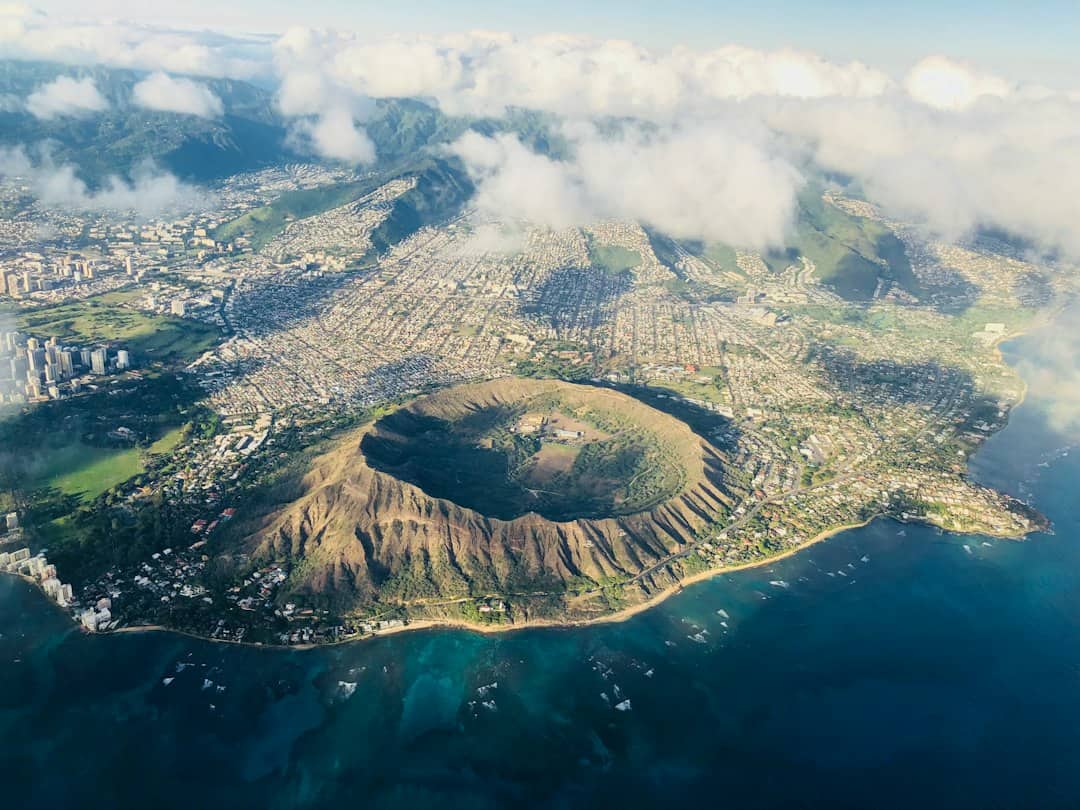
Welcome to the vibrant heart of the Pacific, where the spirit of aloha flourishes amidst the lush landscapes and pristine beaches of Hawaii’s state parks.
These parks are not just beautiful natural areas; they are gateways to understanding the rich cultural heritage and diverse ecosystems of the Hawaiian Islands.
From the rugged cliffs of Kauai to the volcanic terrain of Hawaii Island, each park offers a unique blend of adventure, tranquility, and awe-inspiring views that attract travelers from around the world.
Let’s embark on a journey through Hawaii’s finest state parks, where we can cherish the Aloha spirit and enjoy the natural beauty, cultural richness, and recreational opportunities that these island treasures offer.
Come along as we explore the best state parks in Hawaii, each with its unique story waiting to be discovered.
👉 Escape to the paradise of Hawaii with Skyscanner
The Richness of Hawaii’s State Parks

Hawaii boasts a wealth of natural beauty and cultural history, which is beautifully reflected in its state parks.
With more than 50 state parks scattered throughout the islands, visitors and locals can explore a diverse range of landscapes and ecosystems.
Each park offers its own unique slice of paradise, from the romantic sunny beaches of beachfront parks to the cool, misty realms of lush inland areas.
These parks invite adventurers to immerse themselves in their distinct ambiance and discover the treasures they hold.
The variety of Hawaii’s state parks is remarkable. Within a short drive, you can discover everything from the peaceful charm of sandy beaches to the awe-inspiring power of volcanic landscapes.
These parks are home to some of the Hawaiian Islands’ most stunning and iconic sites.
The fiery craters of Hawaii Volcanoes National Park, the sacred heiau nestled in verdant forests, and the dramatic cliffs and valleys that seem like they have come straight out of a storybook.
👉 Find and book your perfect Hawaiian escape, where each island offers its unique paradise
Unique Features of Hawaiian State Parks:
Volcanic Landscapes:
Hawaii’s state parks offer unparalleled access to active and dormant volcanoes, providing a rare glimpse into the Earth’s fiery heart.
The stark, surreal beauty of these volcanic landscapes, with their lava flows, craters, and steam vents, is a potent reminder of the islands’ dynamic origins.
Lush Rainforests:
Stepping into the heart of a Hawaiian rainforest is like entering another world.
The dense canopy, vibrant with the calls of exotic birds and the murmur of hidden waterfalls, offers a profound sense of peace and connection to nature.
Trails like those in Koke’e State Park on Kauai or the Waikamoi Nature Trail on Maui lead visitors through these verdant realms, revealing the lush beauty that defines much of Hawaii’s landscape.
Historical Sites:
Beyond their natural wonders, Hawaii’s state parks are custodians of the islands’ rich history.
From the ancient heiau, which served as sacred sites for Native Hawaiians, to historical landmarks like the Iolani Palace and the poignant memorials of Pearl Harbor, these parks preserve the stories and traditions that shape Hawaii’s cultural identity.
Hawaii’s state parks are living museums, classrooms without walls and sanctuaries for the soul.
They offer endless opportunities to explore and connect with the unique heritage and natural splendor of the islands.
Must-Visit State Parks in Hawaii
Hawaii’s state parks are a gateway to experiencing the essence of the islands – from iconic landmarks to hidden gems.
They offer diverse landscapes and profound cultural significance.
Join us as we highlight some must-visit state parks and delve into the heart of Hawaii’s natural and cultural treasures.
Oahu: The Heart of Hawaii

Oahu, which is also known as “The Gathering Place,” is an island where vibrant city life and breathtaking natural beauty come together.
It is home to the state capital, Honolulu, and is famous for landmarks such as Waikiki Beach and the historic Pearl Harbor.
Oahu offers a range of natural landscapes, from majestic mountains and lush valleys to pristine beaches and crystal-clear waters.
The island is a microcosm of Hawaii’s diversity, blending cultural experiences, amazing restaurants, historical sites, and outdoor adventures.
Fast Facts about Oʻahu:
- Population: Oʻahu is the most populous of the Hawaiian Islands.
- Iconic Landmark: Pearl Harbor, the only naval base in the U.S. to be recognized as a National Historic Landmark.
- Surfing Capital: The North Shore, known for its massive winter waves, attracts surfers from around the globe.
👉 Discover the vibrant heart of Hawaii on Oahu with Skyscanner
Kaʻena Point State Park

Hours: Daily from 6:00am to 7:00pm
Location: Westernmost Tip of Oahu, Hawaii
Kaʻena Point State Park is a stunning natural reserve located at the westernmost tip of Oahu, where Hawaii’s rugged landscapes meet the vast expanse of the Pacific Ocean.
This remote park is renowned for its dramatic cliffs, pristine sandy beaches, and rich cultural heritage, offering a sanctuary for both the soul and the diverse ecosystems it harbors.
Visitors can explore the park’s hiking trails, which offer panoramic views of the ocean and landscapes that embody the tranquil harmony of land and sea.
Depending on your pace, expect to spend between 1 and 3 hours traversing this scenic park, and watch for whales along the coastline during the winter months.
The park is a haven for seabirds, especially the Laysan albatross, making it an exceptional spot for bird watching and wildlife observation.
Its untouched wilderness, featuring some of the last remaining coastal sand dunes on the island, is a crucial habitat for native plants and seabirds.
Kaʻena Point’s cultural significance in Hawaiian folklore adds a profound spiritual dimension to its natural allure, as it is regarded as a passage where souls depart for the afterlife.
The conservation efforts in place ensure the delicate balance of the park’s ecosystem is preserved, inviting guests to immerse themselves in the serene beauty and tranquility of this untouched corner of Hawaii.
Kaʻena Point State Park stands as a testament to the harmonious coexistence of nature and Hawaiian heritage, offering a sanctuary where visitors can connect with the environment, enjoy the breathtaking views, and delve into the cultural richness that defines this extraordinary park.
Diamond Head State Monument

Operating Hours: 6:00 am to 6:00 pm Daily – Last entry at 4:00 pm. Gates close at 6:00 pm. Closed Christmas and New Years.
Entrance & Parking Fee:
- CREDIT CARD ONLY
- Hawaii Residents: Free with Hawaii ID or DL
- Non-Hawaii Residents: $5
- Children 3 and under: Free
Location: Oahu, Hawaii
Diamond Head State Monument, known locally as Le’ahi, stands as a towering testament to Hawaii’s natural and military history.
This volcanic tuff cone, which emerged around 300,000 years ago, is not only a defining feature of Honolulu’s skyline but also a beacon for adventurers and history enthusiasts alike.
The iconic hike to Diamond Head’s summit is a journey through both time and terrain.
Visitors are guided through historic tunnels and bunkers, remnants of Oahu’s early 20th-century coastal defense system.
The moderately challenging trail offers an immersive experience, unveiling panoramic views of Honolulu, Waikiki, and the expansive Pacific Ocean as you ascend.
The summit is home to the historic Fire Control Station, showcasing Diamond Head’s pivotal role in Oahu’s military history.
These bunkers and observation stations, built in the early 1900s, provide insight into the strategic importance of Diamond Head during times of conflict.
Diamond Head State Monument invites visitors to explore its historic trails, soak in its majestic views, and delve into the island’s rich history, making it an essential visit for anyone traveling to Oahu.
👉 Discover and book your ideal stay in Oahu for an unforgettable island experience
Ahupuaʻa ʻO Kahana State Park

Hours:
- Summer: 7:00am to 7:45pm (April 1st to the day before Labor Day)
- Winter: 7:00am to 6:45pm (Day after Labor Day to March 31st)
Entrance Fee: None
Ahupuaʻa ʻO Kahana State Park is a natural reserve located on the northeastern shore of Oahu that showcases the stunning landscapes of Hawaii and its rich cultural history.
It offers visitors the opportunity to explore ancient Hawaiian sites, including heiau (temples), fishponds, and petroglyphs, that tell the vibrant history of Oahu’s northeastern shore and illustrate the deep connection between the land and its people throughout the centuries.
The park is a sanctuary where the lush valleys and verdant landscapes merge seamlessly with the azure waters of the Pacific, highlighting the island’s diverse ecosystems.
Moreover, Ahupuaʻa ʻO Kahana State Park is more than just a park; it’s a living example of traditional Hawaiian practices.
From the restoration of ancient taro fields to implementing sustainable land management practices through the ahupuaʻa system, the park demonstrates a harmonious balance between utilizing resources from the mountains to the sea.
Guests are invited to immerse themselves in the park’s lush valleys, where they can hike through dense forests, explore pristine coastlines, and connect with the cultural richness that defines this extraordinary part of Hawaii.
Ahupuaʻa ʻO Kahana State Park is a testament to the harmonious relationship between nature and humanity on Oahu’s northeastern shore, offering a unique journey through the natural landscapes and cultural sites that make this park a true gem.
Maui: The Valley Isle

Maui, also known as “The Valley Isle” due to its large isthmus that separates its northwestern and southeastern volcanic masses, is a captivating island that is famous for its world-renowned beaches, the picturesque Road to Hana, and the stunning sunrise at Haleakalā.
Natural beauty is displayed in abundance on Maui, from cascading waterfalls and lush rainforests to peaceful beaches and the dramatic, lunar landscape of its volcanic craters.
The island of Maui offers a diverse range of landscapes that provide both tranquility and adventure, with breathtaking views around every corner.
Fast Facts about Maui:
- Famous Road: The Road to Hana, renowned for its stunning vistas, waterfalls, and winding turns.
- Sunrise and Sunset: Haleakalā National Park is a prime spot for witnessing the spectacular sunrise or sunset above the clouds.
- Whale Watching: From December to May, Maui becomes a haven for humpback whales, making it one of the best places in the world for whale watching.
👉 Whether it’s the road to Hana or the beaches of Wailea, secure your flight on Skyscanner to Maui today and prepare for an adventure in paradise.
ʻĪao Valley State Monument
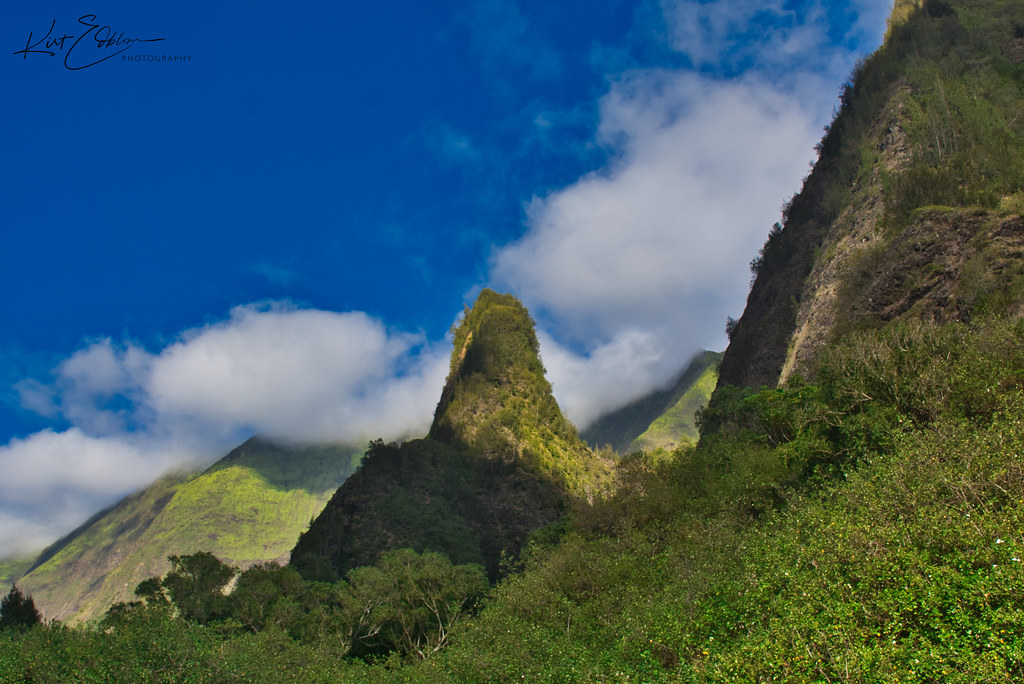
Hours Open: 7:00 am to 6:00 pm daily
Entrance Fee:
- Reservations Required for out-of-state residents
- Residents: Free with Hawaii DL or ID
- Non-Residents: $5
- Children 3 and Under: Free
Nestled in the heart of Maui, the ʻĪao Valley State Monument is a lush haven that brims with history and natural beauty.
It’s renowned for its verdant landscapes and the iconic ʻĪao Needle, and provides a glimpse into Hawaii’s past while allowing visitors to connect with the tranquillity of its natural surroundings.
This sacred valley was the site of the pivotal Battle of Kepaniwai in 1790, where King Kamehameha I fought to unite the Hawaiian Islands, and remains a place of significant cultural and spiritual importance.
Visitors can enjoy a leisurely stroll along a paved 0.6-mile walk that leads to a scenic viewpoint of Kuka‘emoku, also known as the ʻĪao Needle – an impressive erosional feature that rises 1200 feet from the valley floor.
Along the way, a botanical garden showcases the variety of plants brought by the Hawaiians who once settled in the valley, providing a deeper understanding of the area’s rich ecological and cultural history.
The ʻĪao Valley State Monument is a serene and inspiring place that invites exploration and reflection.
It offers a cherished experience for all who visit, and an opportunity to cherish the beauty of nature while learning about the history and culture of Hawaii.
Mākena State Park (Big Beach)

Hours:
- Oneloa (Big Beach) & Oneuli (Black Sand) Beach: Daily – 5:00am – 7:00pm
- Puu Olai (Little Beach):
- Saturday & Sunday – 5:00am – 4:00pm
- Weekdays – 5:00am – 7:00pm
Entrance Fee:
- Hawaii Residents: Free with Driver’s License or ID
- Non-Residents: $5.00 Per Person
- Children 3 and Under: Free
Mākena State Park, situated on Maui’s southern coastline, is renowned for its scenic wildland and beautiful beaches, including the prominent Oneloa (Big Beach) and the unique Oneuli (Black Sand) Beach.
The park is dominated by the striking cinder cone of Pu‘u Ola‘i and features one of the island’s largest white sand beaches.
This natural paradise offers a variety of activities such as swimming in calm seas, bodysurfing, board surfing, shore fishing, and enjoying the sun and sand.
The expansive golden sands of Big Beach stretch nearly two-thirds of a mile long and 100 yards wide, providing ideal conditions for beachgoers and families seeking tranquility and recreational fun.
Despite its beauty, visitors should note that no drinking water is available within the park’s 164.4 acres, so plan accordingly.
Mākena State Park’s blend of natural beauty and recreational opportunities makes it a must-visit destination for those exploring Maui.
👉 Dive into the beauty of Maui. Find your perfect accommodation today for a journey through the Valley Isle’s splendor.
Haleakalā National Park
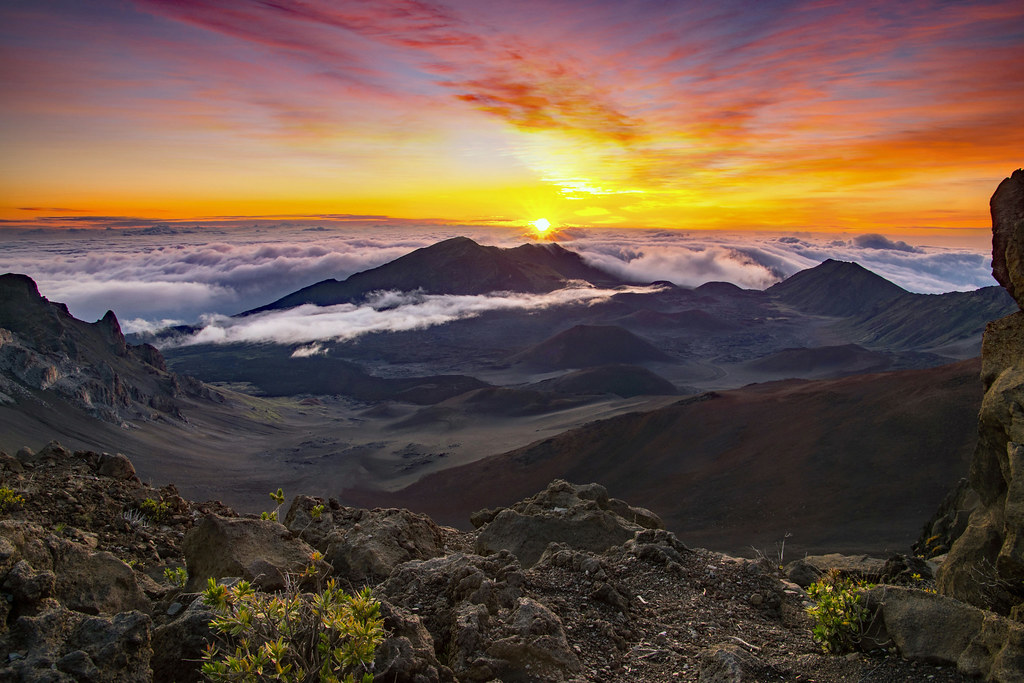
Entrance Fee: Standard Entrance Pass: $15.00–$30.00
Located on the island of Maui, Haleakalā National Park spans from the 10,023-foot summit of Haleakalā down to the Kīpahulu coast near Hana.
The summit area and the Kīpahulu District are not connected by road but are both accessible from Kahului. Please note, there are no gas stations within the park.
Haleakalā National Park is a stunning natural wonder located on the island of Maui. Haleakalā National Park spans from the 10,023-foot summit of Haleakalā down to the Kīpahulu coast near Hana.
The summit area and the Kīpahulu District are not connected by road but are both accessible from Kahului.
Please note, there are no gas stations within the park. that boasts a variety of breathtaking landscapes.
From the volcanic summit of Haleakalā to the lush rainforests and rocky coastline of the Kīpahulu District, the park offers a surreal experience that is unmatched.
The park is known for its spectacular sunrises and sunsets, which can be viewed from above the clouds at the summit.
The stark volcanic landscapes beautifully contrast with the subtropical areas, which are filled with rich biodiversity and are home to native birds, waterfalls, and pools.
Adventure and solitude await you in this vast park, where you can indulge in sightseeing, hiking, and exploring Maui’s natural wonders.
The park has numerous trails, ranging from easy to more strenuous hikes, which allow visitors to immerse themselves in the unique environments that Haleakalā has to offer.
However, since the park is expected to be busy throughout the year, it is essential to plan your trip ahead of time to ensure a fulfilling and memorable experience at this must-visit national landmark.
Kauaʻi: The Garden Isle

Kauaʻi, also known as “The Garden Isle,” is a true paradise for nature enthusiasts and adventure seekers.
It is the oldest and fourth largest of the Hawaiian Islands, featuring diverse and breathtaking landscapes.
From the stunning cliffs of the Nā Pali Coast to the deep valleys in its interior, Kauaʻi offers a lush and green wonderland that showcases some of the world’s most spectacular natural beauty.
Kauaʻi’s relatively low-key development, in comparison to its larger counterparts, allows it to maintain a sense of wildness and purity, inviting visitors to immerse themselves in its tranquil beauty and adventurous terrains fully.
Fast Facts about Kauaʻi:
- Natural Wonders: Home to the wettest spot on earth, Mount Waiʻaleʻale, at the center of the island.
- Iconic Coastline: The Nā Pali Coast, famous for its towering sea cliffs accessible only by foot, boat, or air.
- Outdoor Paradise: Offers a myriad of outdoor activities, from hiking and kayaking to snorkeling and zip-lining, amidst its natural beauty.
👉Book your flight now to witness the breathtaking Na Pali Coast and the tranquil beauty of Hanalei Bay through Skyscanner
Waimea Canyon State Park

Hours Open: Daily during daylight hours
Entrance Fee:
- Hawaii Residents: Free with Hawaii Driver’s License or ID
- Non-Residents: $5.00 per person
- Children 3 and Under: Free
Waimea Canyon State Park is a must-visit destination for anyone who loves breathtaking views.
It’s known as the “Grand Canyon of the Pacific” and is simply stunning.
The park has a scenic drive along the canyon rim with multiple lookouts that offer expansive views of the gorge’s deep, colorful expanse.
Additionally, you can enjoy the viewpoint of Ni‘ihau Island, wildland picnicking, and access to trails.
The park and its adjacent forest reserves provide a range of hiking opportunities, from leisurely walks to long, strenuous treks into the canyon’s depths.
Visitors can also enjoy seasonal trout fishing and pig and goat hunting in nearby areas.
Waimea Canyon State Park is a natural wonderland that offers a unique and dramatic landscape shaped by millions of years of erosion and volcanic activity.
The canyon itself is 14 miles long, one mile wide, and over 3,600 feet deep, with vivid colors that showcase its vastness.
With rugged terrain, lush valleys, and cascading waterfalls, hikers and nature lovers can explore the park’s natural beauty and immerse themselves in the grandeur of Kaua‘i’s renowned canyon.
The park has trails of varying difficulty levels that lead to stunning vistas of the canyon and Waipoʻo Falls, making it an ideal destination for those who want to witness the beauty of this natural spectacle.
Nā Pali Coast State Wilderness Park

Hours Open: Daily from 7:00am to 7:45pm
Entrance Fee: Entrance and parking/shuttle reservations are required and can be made at www.gohaena.com.
- Residents: $25 per night, per campsite
- Non-Residents: $35 per night, per campsite *Note: Parking or shuttle reservations are necessary unless being dropped off directly at the site.
The Nāpali Coast is a truly breathtaking landscape that spans 16 miles of rugged coastline.
This untouched paradise is known for its dramatic pali (cliffs) that tower over the Pacific Ocean, deep green valleys, and pristine, secluded beaches.
Accessible only via the challenging 11-mile Kalalau Trail, the park offers adventurers a once-in-a-lifetime opportunity to explore its stunning beauty.
The trail winds through ancient terraces where Hawaiians once lived and cultivated taro, and through waterfalls and swift-flowing streams that have shaped these valleys over millennia.
For those who prefer adventure on the water, kayaking is an incredible way to experience the Nāpali cliffs up close, with opportunities to explore sea caves and hidden beaches.
The Nāpali Coast is a true representation of the untouched beauty of Kauaʻi and is an iconic symbol of Hawaii’s natural majesty.
Important Note: Camping permits for the Nāpali Coast often sell out well in advance, especially during the summer months. It is advised to plan and secure permits early to ensure your spot. Camping permits are available 90 days in advance and are required for overnight stays within the park.
👉 Retreat to the tranquil paradise of Kauai. Secure your lodging amidst the lush landscapes of the Garden Isle.
Hawaiʻi (The Big Island): The Island of Diversity

Hawaii, often referred to as The Big Island, is a place of remarkable diversity.
It boasts fiery volcanoes, snow-capped mountains, lush rainforests and black sand beaches.
Being the youngest and largest of all the Hawaiian Islands, it offers a microcosm of nearly every environment found on earth.
The Big Island invites exploration and adventure at every turn with its stark lunar landscapes of volcanic deserts and vibrant ecosystems of marine sanctuaries.
It embodies the raw power and sublime beauty of nature, making it a perfect destination for nature lovers.
Fast Facts about The Big Island:
- Volcanic Activity: Home to two of the world’s most active volcanoes, Kīlauea and Mauna Loa, providing visitors with a unique opportunity to witness volcanic activity up close.
- Size and Diversity: The Big Island is bigger than all the other Hawaiian Islands combined, offering diverse climates and ecosystems.
- Astronomical Observatories: The summit of Mauna Kea houses the world’s largest astronomical observatory for optical, infrared, and submillimeter astronomy, making it a prime spot for stargazing.
👉 Venture to the Big Island of Hawaii for an experience as diverse as its terrain, all through Skyscanner.
Hawaii Volcanoes National Park

Hours Open: 7 days a week, 24 hours a day, including holidays
Entrance Fee:
- Private Vehicle Pass: $30 for 7 days
- Motorcycle Pass: $25 for 7 days
- Pedestrian / Cyclist Pass: $15 for 7 days
Hawai‘i Volcanoes National Park is a UNESCO World Heritage Site and International Biosphere Reserve, and it showcases the island’s volcanic origins and the amazing natural forces that shape our planet.
The Kīlauea Visitor Center is a great place to start your visit to the park.
You can find rangers and volunteers there every day, who can give you the most up-to-date information about current eruptions, hiking trails, activities, and ranger-led programs.
The park features a wide range of environments, from lush rainforests to stark, lunar landscapes, surrounding the active volcanoes of Kīlauea and Mauna Loa.
Visitors have the unique opportunity to explore a dynamic landscape of craters, calderas, and ancient lava tubes, set against the backdrop of ongoing volcanic activity.
The park’s diverse terrain provides a habitat for unique ecosystems and is a place of deep cultural importance to Native Hawaiians.
It protects some of the most significant geological, biological, and cultural landscapes in the world, offering visitors a chance to witness the creation and transformation of the earth in real-time.
Hawaii Volcanoes National Park invites exploration and discovery, promising an unforgettable experience for all who venture into this primordial and ever-changing landscape, from sea level to the summit of Mauna Loa at 13,680 feet.
Akaka Falls State Park

Hours Open: Daily – 8:30am to 5:00pm
Entrance Fee:
- Credit Card Only
- Hawaii Residents: Free with Drivers License or ID
- Non-Residents: $5.00 Per Person
- Children 3 and Under: Free
Akaka Falls State Park is a stunning retreat located on the northeastern Hamakua Coast of The Big Island.
The park is famous for its 442-foot-high Akaka Falls, which drops into a gorge, and is a popular attraction for tourists from all over the world.
The park offers a scenic loop trail that winds through a lush rainforest filled with wild orchids, bamboo groves, and verdant ferns.
The trail leads to breathtaking viewpoints of both Akaka Falls and the smaller Kahuna Falls.
Accessible and peaceful, Akaka Falls State Park is a must-visit destination for nature enthusiasts and those who want to experience the island’s magnificent landscapes and cascading waterfalls.
👉 Book your stay to experience the Big Island’s unique blend of adventure and culture
Planning Your Visit to Hawaii’s State Parks

Exploring the natural wonders of Hawaii’s state parks is an unforgettable experience, but a little planning can ensure your adventures are both enjoyable and safe.
Here’s what you need to know about reservations, fees, passes, and safety to make the most of your visit.
Reservations Required
Some of Hawaii’s most popular state parks and monuments require reservations or permits, especially those with limited access to ensure conservation and an enjoyable visitor experience. For example:
- Hāʻena State Park (including the Kalalau Trail, Nā Pali Coast State Wilderness Park): Reservations are required for parking, entry, and overnight camping. Reservations can be made online through the Hawaii Department of Land and Natural Resources (DLNR) website.
- Diamond Head State Monument: Entry reservations are recommended to guarantee your visit due to high visitor demand.
- Waiʻānapanapa State Park: Reservations are required for entry and parking, aiming to preserve the park’s natural beauty and resources.
Always check the specific park’s official website or the DLNR website for the most current information and to make reservations.
Park Fees and Passes
Entrance and parking fees vary by park and are used to maintain and preserve the natural and cultural resources for future generations.
Some parks may have nominal fees for parking or entry, while others are free to visit.
For frequent visitors, Hawaii does not currently offer a state-wide park pass that covers all state parks.
However, the National Park Service (NPS) offers passes that cover national parks in Hawaii, such as Hawaiʻi Volcanoes National Park and Haleakalā National Park.
👉 Let Skyscanner be your guide to Hawaii’s breathtaking landscapes and warm aloha spirit
Safety Tips

Exploring Hawaii’s state parks can be a rewarding experience, but prioritizing safety is essential.
This is especially important when hiking alone or venturing into remote areas.
- Stay on marked trails: To protect both the environment and yourself, always stick to designated paths and observe all signage.
- Inform someone of your plans: Always let someone know where you’re going and when you expect to return, especially if you’re hiking alone.
- Be prepared: Bring sufficient water, sunscreen, insect repellent, and appropriate clothing. Check weather conditions before you depart.
- Respect wildlife and nature: Keep a safe distance from any animals you encounter and do not remove natural objects or disturb the landscape.
- Be aware of your limits: Choose trails and activities that match your fitness level and experience.
By following these guidelines and preparing in advance, your visit to Hawaii’s state parks can be a safe, enjoyable, and unforgettable adventure.
Conservation and Respect
The stunning natural beauty and distinct ecosystems of Hawaii’s state parks are a testament to the islands’ rich natural heritage.
These lands hold immense cultural importance and are also the home to vulnerable ecosystems and endangered species.
As visitors, it is our responsibility to preserve these treasures for generations to come.
Respecting natural resources, cultural sites, and wildlife isn’t just a matter of courtesy; it’s our duty.
- Natural Resources: Practice Leave No Trace principles by minimizing your impact on the environment. This includes packing out all trash, staying on designated trails to prevent erosion, and not disturbing native flora and fauna.
- Cultural Sites: Many Hawaii parks encompass areas sacred to Native Hawaiian culture. Treat these sites with respect—observe signage, do not remove artifacts, and listen to any guidance from park rangers or cultural guides.
- Wildlife: Hawaii’s islands are home to numerous endemic species, many of which are endangered. Maintain a safe distance from wildlife, never feed animals, and avoid touching marine life while snorkeling or diving.
👉 Embrace the spirit of aloha and secure your dream lodging in Hawaii
The Role of Visitors in Conservation Efforts
Visitors have the power to make a positive impact on conservation efforts.
To contribute to the preservation of these magnificent places, it is important to adhere to park rules, participate in educational programs, and support conservation organizations.
Volunteering for beach clean-ups or native plant restoration projects can also enhance your travel experience and help protect Hawaii’s natural and cultural heritage.
FAQs
How many state parks does Hawaii have?
Hawaii boasts over 50 state parks, showcasing the islands’ diverse landscapes and cultural sites.
What state parks in Hawaii require reservations?
Some parks in Hawaii like Hāʻena State Park, Diamond Head State Monument, and Waiʻānapanapa State Park have specific requirements for entry, parking or camping.
It is always advisable to check the official park website or the Hawaii Department of Land and Natural Resources (DLNR) for the latest updates and information.
How much does it cost to park at the state parks in Hawaii?
Parking and entry fees vary among parks, with some charging nominal fees and others being free. Check each park’s official website for specific fee information.
Does Hawaii have a state park pass?
Hawaii does not offer a state-wide park pass for all state parks. However, fees collected at parks go towards maintenance and conservation efforts.
Can you hike alone in Hawaii?
Hiking alone in Hawaii is possible, but taking certain precautions is important.
To ensure your safety, inform someone of your hiking plans, stay on marked trails, and bring enough water, food, and safety gear.
Always assess your physical condition and the trail’s difficulty level before starting a solo hike.
By respecting nature, participating in conservation, and preparing for your visit, you can help ensure that Hawaii’s state parks continue to inspire awe and wonder for all who explore them.
👉 Dreaming of Hawaiian beaches and sunsets? Skyscanner has you covered with unbeatable flights to the Aloha State. Find your perfect flight, book today, and start packing for paradise.
Conclusion

Hawaii’s state parks offer a remarkable opportunity to explore the natural and cultural heritage of the islands.
From the volcanic landscapes of Hawaiʻi Volcanoes National Park to the tranquil shores of Mākena State Park in Maui, each park provides a gateway to adventure, learning, and profound natural beauty.
These cherished landscapes invite visitors to experience the delicate balance of ecosystems that thrive in Hawaii’s unique environment.
So, let’s pack our spirit of adventure and leave no trace behind.
Explore, learn, and be inspired by the breathtaking diversity of Hawaii’s state parks.
By doing so, we ensure that these landscapes remain vibrant and accessible for generations to come, continuing to inspire all who seek the tranquility, adventure, and awe that only Hawaii can offer.
👉 Plan your ultimate Hawaiian getaway by discovering and booking the ideal accommodation across the islands

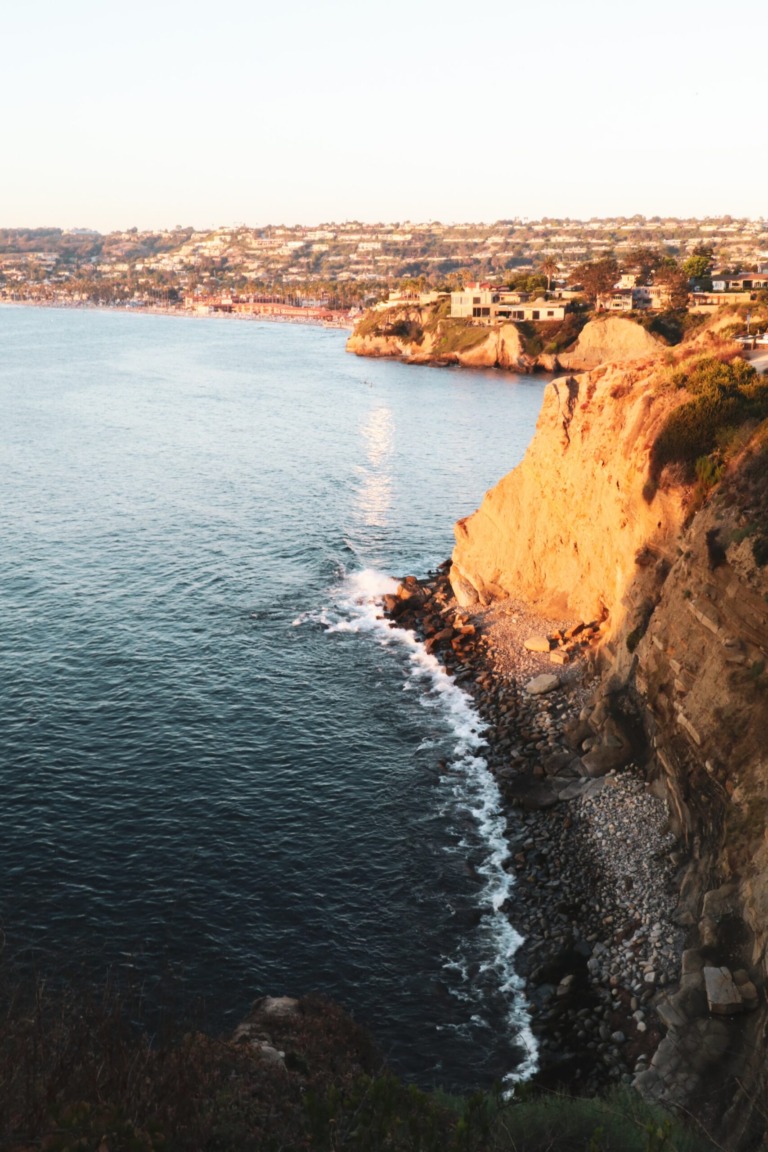
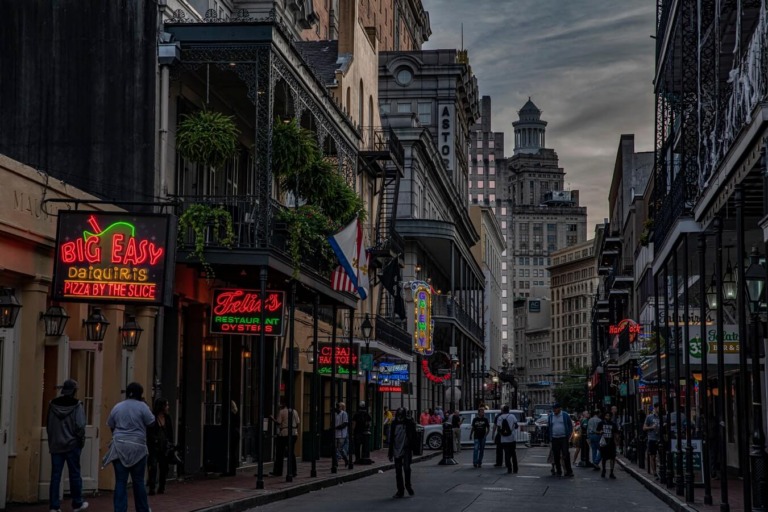
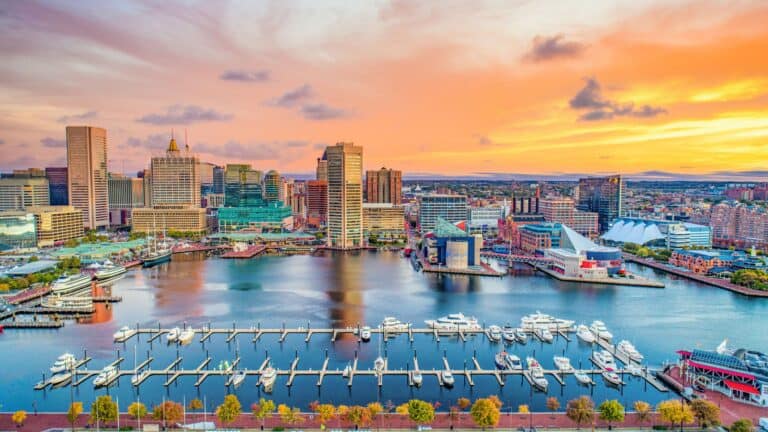
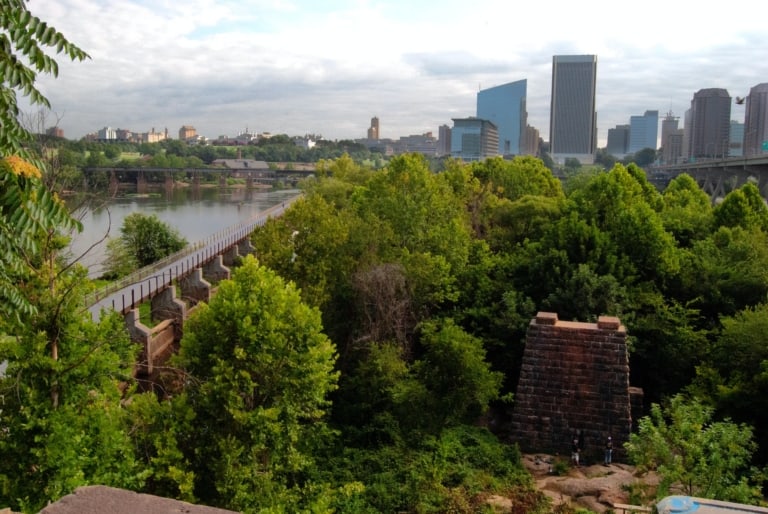

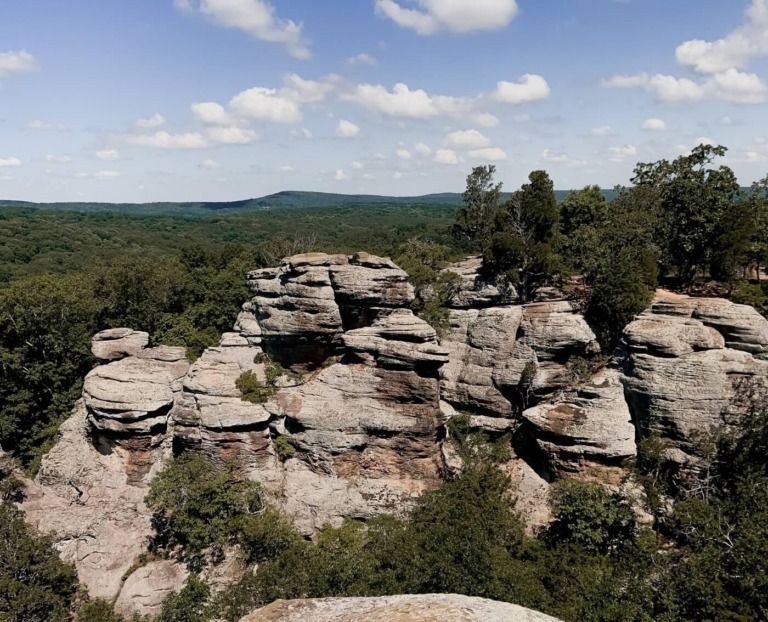
2 Comments
Comments are closed.